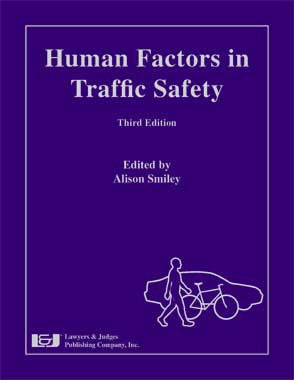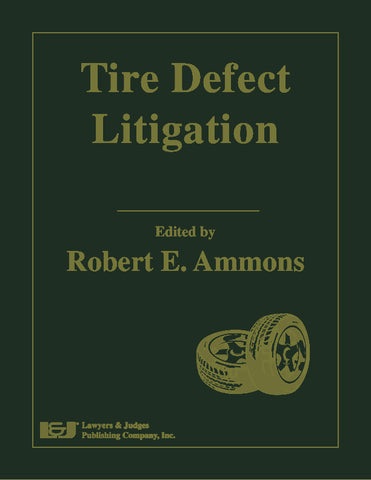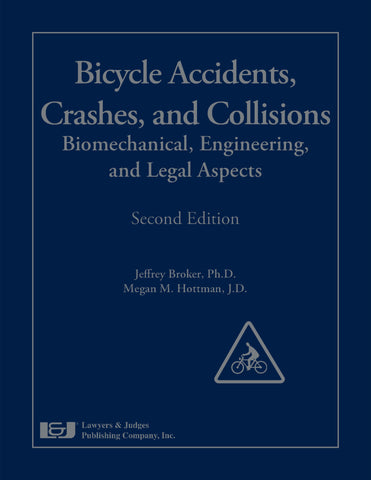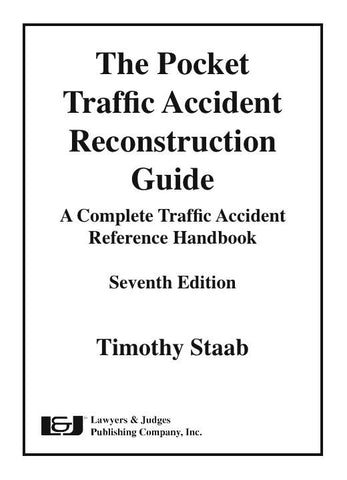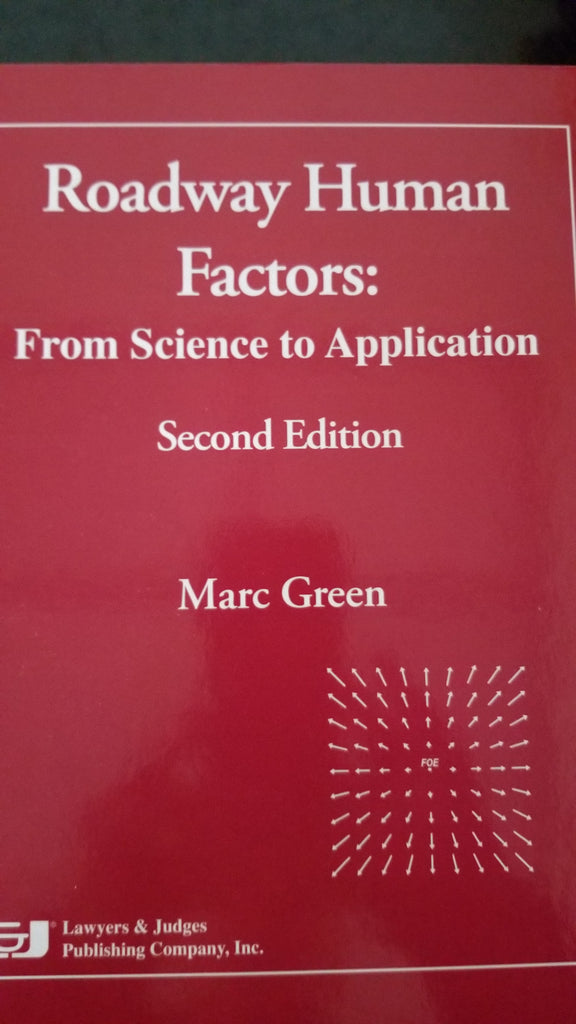
Roadway Human Factors: From Science to Application: Second Edition
- Author: Marc Green
- ISBN-13: 978-1-930056-60-2
- ISBN-10: 1-930060-76-4
- Copyright Date Ed: January 1, 2020
- Pages: 600
- Binding Information: Casebound
- Size: 8.5 × 11 inches (US)
This book’s title has two parts, “Roadway Human Factors” and “From Science To Application.” The first describes its major goal: to analyze driver behavior, especially the causes and avoidance of collisions. In most general terms, the goal is largely to answer a single question: “Why didn’t the driver respond sooner?” The cause of most collisions lies in the answer.
The book’s perspective is psychological. It views roadway events through the eyes of the driver. This contrasts with the third-party god’s eye view that appears in accident reconstruction diagrams and other analyses which are primarily based in physics and cookbook science. Physics cannot be ignored, but roadway events can only be explained by examining driver psychology. Drivers act based on their perceived reality which differs from the physical reality of the accident reconstruction diagram.
The second part announces its method: the application of scientific research. Specifically, the science in question is experimental psychology. Much of this book reads like an introductory text on experimental psychology, albeit with a distinctly applied slant. This is necessary. There are frequent misunderstandings about the definition of human factors. It is best described as a branch of experimental psychology. Human factors applies experimental psychology data to guide the design of objects and environments so that they that fit human abilities and are easy and safe to use.
This book’s underlying thesis is that knowledge of the science is a necessary but not sufficient condition for understanding roadway human factors. The key word in the title is “From” because there is a catch-22. Controlled research has inherent characteristics which differ from real-world conditions. Scientific research is generally conducted in highly simplified and artificial situations with unrepresentative subjects and drivers. Scientific research data cannot then be directly applied to the real-world. The step from science to application is far greater than many imagine, probably because there are so few who are well versed in both.
The book also introduces areas of science that are unfamiliar to most who investigate collisions. “Ecological optics” is a discipline of perceptual psychology that is key in understanding vehicle guidance and collision avoidance. “Visual psychophysics” is the psychological science that underlies visibility and all other sensory judgments. “Operant learning” is the psychological science of adaptability and behavior change based on the consequences of action. The book also introduces more specific concepts that are important but seldom figured into collision analysis. These include notions such as affordances and action boundaries, system tolerances, crowding, and response conflicts.
The first seven chapters cover basic experimental psychology topics. In each of these chapters, however, the topic’s relevance is highlighted by the discussion of how it would be applied to roadway human factors. Chapter 2 discusses the most basic human factors, the ability to sense and to adapt to the world. It describes how viewers sense the world and make yes/no and magnitude judgments about whether anything is out there. It also explains the basic mechanism of learning and adaptation that shapes driver behavior and often leads to high risk taking. Chapter 3 covers the basic physical properties of light and their weak relationship to the fundamental sensations of brightness and color that provide the raw material for perception.
Chapters 4 and 5 switch to visibility. The chapters are detailed how-to discussions on determining contrast threshold, and hence when a roadway object would be visible. Chapter 4 reviews the physical calculations needed to determine contrast, while Chapter 5 outlines the methods for calculating contrast threshold. Chapter 6 explains human information processing and the factors that determine whether a driver will consciously perceive an object, such as a vehicle or a pedestrian. It also discusses driver cell phone distraction and driver aging as examples about the perils of applying research data to predicting real-world events. Chapter 7 describes the perception of space and motion, which drivers use to predict whether a conflict and potential collision is imminent.
The final four chapters apply concepts and data from the previous material to road collisions. Chapters 8 and 9 analyze vehicle collisions into two fundamental geometries based on the driver’s main task. Chapter 8 examines longitudinal geometries, such as rear-end and head-on, where the approaching vehicle moves in depth straight toward the eye. The primary driver task is to make motion-in-depth judgments that predict future vehicle locations. In longitudinal geometries, detection is usually easy, so the most common collision cause is motion-in-depth misjudgment. Chapter 9 discusses lateral geometries, where the approaching vehicle is on a crossing path. The driver must detect the approaching vehicle and judge whether there will be a conflict at an intersecting point. In lateral geometries, motion prediction is easy (or at least easier) but detection is more difficult. Detection failure is then the major collision cause. Examples of real collisions demonstrate these principles.
Chapter 10 examines pedestrians and bicycles, whose collisions resemble those discussed in the preceding chapters but with some added issues. There is a short discussion of ways to reduce the number of these collisions. Chapter 11 ends the book with a review of perception-response time, the most widely misunderstood and misused concept in collision analysis. It is the area where scientific data are most egregiously misapplied and where nonscientists (and some scientists) make their greatest mistakes.
Table of Contents
Preface
0.0 Second Edition Preface to Preface
0.1 Introduction
0.2 Point of View
A. What is Science
B.
Types of Science
1. Experimental Research. i.Basic
ii. Applied
iii.Limitations
iv. Precision
2. Statistical Data Mining Research
3. Observational Research
4. Naturalistic Research
5. Survey and Self-Report Research
0.3 The Book Contents
A. Structure
B. References and Quotes
C. Stories and Examples
0.4 References
0.5 Endnotes
Chapter 1: Big Vision, Big Human Factors
1.1 Introduction
1.2 Big Vision
A. What Vision Isn’t
B. What Vision Is
1. Limits on seeing
2. What do we perceive?
3. Naiive Realism
1.3 From Sensation To Perception
A. Perception of Space, Size and Motion
B. Innate Perceptual Organization
C. Learned Perceptual Organization
D. Why is All This Important?
1.4 Big Human Factors
A. From Perception to Action
B. Example: The Underride Collision
1.5 Basic Driver Tasks
A. Detection
B. Prediction
1.6 Conclusion
1.7 References
1.8 Endnotes
Chapter 2: Psychophysics and Operant Learning
2.1 Introduction
2.2 Psychophysical Concepts
A. Classical Psychophysics
1. Sensory thresholds
2.The interpretation of thresholds
B. Signal Detection Theory
1. Sensory factors
2. Nonsensory factors
3. SDT applications
4. Perceiving probabilities and payoffs
2.3 Magnitude Scaling
2.4 Operant Learning and Adaptation
A. Psychology and Inferred Mental States
B. Basic Operant Learning Concepts
1. Strength of reinforcers
2.Typer of reinforcers
3.Schedule of reinforcers
4.Shaping
C. Implicit Laerning
2.5 Conclusion
2.6 References
2.7 Endnotes
Chapter 3: Physics, Physiology, Psychology
3.1 Introduction
3.2 Physics
A. Light
1. Quantum and wave theories of light
2. Light measurement, quantities and units
3. Light and vision: Mueller’s “law of specific nerve energies”
B. Optics
1. Reflectance
2. Transmission
3. Refraction
3.3. Physiology
A. Eye Anatomy and Optics
B. Eye Muscles
C. The Retina
1. Rods and cones
2. Visual angles
3. Visual fields
i. Monocular vs. binocular visual fields
ii. Achromatic vs. Chromatic Visual Fields
iii. Visual Field Nonuniformities
D. Adaptation
E. Higher Visual Pathways: Ventral and Dorsal Streams
3.4. Sensation
A. Brightness
1. Brightness and adaptation
2. Brightness and lightness
B. Color
1. Basic color vision
i. Wavelength and color
ii. Classification of lights and colors
iii. Basic color theory
iv. The number of discriminable colors
v. The number of color categories
vi. Color appearance changes readily
2. Color deficiency
i. Anomalous trichromats
ii. Dichromats
iii. Monochromats
iv. Color deficient perception
v. Color deficiency and road mishaps
3. Color vs. brightness contrast
3.5 Conclusion
3.6 References
3.7 Endnotes
Chapter 4: Visibility Analysis 1: Physical Contrast
4.1 Introduction
4.2 Step 1: Determine Whether a Direct Sightline Existed
4.3 Step 2: Assess the Target and Background Luminance
A. Luminance
1. Direct measurement general methods
2. Measurement scenarios
3. Indirect luminance determination
B. Illuminance
1. Illuminance measurement
2. Illumination from calculation: practical photometry
3. Measuring beam spread
4. Using tables: a car headlamp example
5. Using isocandela diagrams—a locomotive headlamp example
6. Non-photometric beam spread representations: a railroad crossing signal example
7. Illuminance from tables: an astronomical data example
C. Reflectance
1. Direct measurement
2. Calculation
3. Tables
4. Reflectance enhancers
4.4 Step 3: Compute the Physical Contrast of the Target on the Background
A. Direct Looking
B. Viewing Through a Semi-Transparent Surface
C. Glare Effects
1. Discomfort glare
2. Disability glare
3. Glare from headlamps
4. Sun glare
5. Final comments on glare
D. Atmosphere and Weather Effects
1. Atmospheric extinction
2. Fog
3. Rain
4. Snow
4.5 Conclusion
4.6 References
4.7 Endnotes
Chapter 5: Visibility Analysis 2: Psychology and Contrast Thresholds
5.1 Introduction
5.2 Determining Contrast Threshold
A. Using Data and Models
B. The DETECT Model
C. The Adrian/ RP-8 Model
D. Adrian/RP-8 Model Variables
1. Background/Adaptation Luminance
2. Size
3. Duration
4. Polarity
5. Age
6. Glare
E. Additional Visual Variables
1. Retinal eccentricity
2. Color
3. Motion and flicker
4. Background effects
5. Adaptation state
6. Monocularity/binocularity
7. Eye disease and optical correction
8. Arousal level
9. Uncertainty and expectation
10. Shape
11. Orientation
12. Blur
13. Uneven contrast
5.3 Contrast Threshold Multipliers
A. Detection Level Multipliers
B. Field Factors and Visibility Level Multipliers
1. General visibility levels
2. Pedestrian visibility levels
C. Limitations of Multipliers
5.4 Alternate Metrics for Detection
A. Acuity
1. Types of acuity
2. Optimal acuities
B. Illumination-Based Metrics
1. The twilight envelope
2. Kosmatka (1995)
C. Visual Range and Illumination at the Eye
1. Negative contrast
2. Positive contrast
5.5 Conclusion
5.6 References
5.7 Endnotes
Chapter 6: Cognition, Attention, and Conspicuity
6.1 Introduction
6.2 Overview: Humans as a System
A. Open vs. Closed-Loop Behavior
B. Cognitive Architecture
6.3 Basic Attention
A. William James Explains Attention
B. Laws of Attention
C. Attention and Eye Movements
D. Selection Modes: Space vs. Object Attention
1. Spatial attention
i. 2-D space
ii. 3-D space
iii. Time
2. Object attention
6.4 Source of Control: Passive/Exogenous vs. Active/Endogenous
A. Control and Search
1. Attention conspicuity vs. search conspicuity
2. Serial vs. parallel search
B. Control of Eye Movements
C. Beyond the Endogenous-Exogenous Dichotomy
6.5 Conspicuity
A. Sensory Conspicuity
1. Color
2. Flicker and motion
3. Symmetry
4. Humans
5. Visibility: achromatic contrast, size, & location
6. Depth
7. Salience
B. Cognitive Conspicuity
C. Sensory vs. Cognitive Conspicuity
6.6 Attention & Inattention
A. Expectation
B. Automaticity
C. Tunnel Vision
1. Inexperience
2, Stress, perceptual narrowing, and hypervigilance
3. Mental workload and divided attention
D. Inattentional Blindness
E. Change Blindness
1. Fast changes
2. Slow changes
F. Familiarity Blindness
G. Background Factors
1. Masking and clutter
2. Overshadowing
3. Cue generalization
4. Crowding
H. Search Factors
1. Satisfaction of search
2. Inhibition of return
3. Visual field asymmetries
4. Switching costs and attentional blink
I. Reduced Capacity
1. Low arousal
2. Alcohol & drugs
J. Aging
K. Decision Factors
6.7 Driver Distraction
A. Reasons to Believe
B. Reasons to Doubt
C. Why Have Research Predictions Been So Wrong?
1. Problems with data mining research
2. Problems with experimental research
6.8 What Distracts Drivers?
6.9 Conclusion
6.10 References
6.11 Endnotes
Chapter 7: Space & Ecological Optics
7.1 Introduction
A. Depth: The “Rogue Dimension”
B. Indirect Spatial vs. Direct Optical Perception
7.2 Spatial Representation
A. The Physics of Space vs. the Psychology of Space
B. Cognitive Re-Construction of Space
1. Accommodation and vergence (extraretinal cues)
2. Disparity
3. Occlusion (interposition)
4. Aerial (atmospheric) perspective and blur
5. Relative and familiar size
6. Brightness, color, shading, and shadow
7. Motion parallax (relative motion) and accretion/deletion (dynamic occlusion)
8. Height-in-the-visual-field
9. Texture gradient (detail perspective)
10. Linear perspective
C. Summary of Spatial Representation
1. Usefulness of depth cues
2. Depth cues and driving
7.3 Optical Representation
A. Ecological Optics
B. Global Radial Optic Flow
1. The variable τ and time-to-passage (TTP)
2. Global optic flow rate (GOFR) and egomotion
C. Global Laminar Flow
D. Local Radial Optical Flow and Looming
7.4 Indirect Space v. Direct Optical Perception: Ventral vs. Dorsal?
7.5 Conclusion
7.6 References
7.7 Endnotes
Chapter 8: Collision Analysis 1: Longitudinal Geometries
8.1 Introduction
A. Four Basic Questions
B. Classifying Collisions
1. TTC scenarios
2. TTP scenarios
C. Lateral vs. Longitudinal Geometries
D. Beyond Geometry
E. Nomenclature
8.2 Longitudinal Geometry
A. Avoiding Longitudinal Collision With Spatial Information
B. Avoiding Longitudinal Collisions With Optical Information
1. Background
2. Basic calculations
3. Controlling avoidance response with optical variable
C. TTP Geometries
8.3 Looming—Data and Thresholds
A. Looming Thresholds With Moving Viewers
1. Controlled research thresholds
2. Real-world thresholds
B. Looming Thresholds With Stationary Viewers
C. Research vs. Real-World Thresholds
8.4 Looming—Example Analysis
8.5 Analysis of the Analysis
A. Parameter Values
1. Braking deceleration: 0.5g
2. Lateral acceleration: 0.4g
3. PRT: 1.5 seconds
4. Looming threshold: 0.004–0.008 rad/sec
5. Accelerated approach
8.6 Analysis of Task Assumptions
A. Do Drivers Use τ?
1. Other optical variables
2. Disparity
3. Spatial information
4. Symbolic information
B. Can Drivers Accurately Judge τ/TTC?
C. Does TTC determine urgency?
1. Action boundaries
2. Locating the action boundary
3. System tolerance
4. Contingency and error traps
8.7 Why Do Longitudinal Highway Collisions Occur?
8.8 Conclusion
8.9 References
8.10 Endnotes
Chapter 9: Collision Analysis 2: Lateral Geometries
9.1 Introduction
9.2 The CBDR Rule
A. The CBDR Rule at Right Angles
B. Relative Speed and Bearing Angle
C. The CBDR at Acute and Obtuse Angles
D. Application of CBDR to Real Scenarios
E. VBDR Scenariors
1. Acceleration/deceleration
2. Curved trajectory
9.3 Detection
A. Physical Obstruction
1. Internal obstructions
2. External obstructions
B. Human Factors
1. Search and fixation
2. Expectation
C. Putting It All Together: Failure to See Examples
1. Example 1: Vehicle-vehicle right-angle collision in daylight
2. Example 2: Vehicle-bicycle right-angle collision in twilight
3. Example 3: Vehicle-motorcycle longitudinal collision at night
D. Intersections & Traffic Control Devices
1. Intersections and driveways
2. Signals
3. Signs
4. Example 4: Failure to see traffic control information
9.4 Prediction
A. Constant Bearing Angle
1. Avoiding a collision with a vehicle
2. Causing a collision with a gap
B. Comparing Gap Closure TTIV1 With Egomotion TTI2
1. Judging gap closure
2. Judging egomotion
3. Comparing gap closure and egomotion
C. Evaluation
1. Judging right-of-way
2. Judging gaps and lags
9.5 Conclusion
9.6 References
9.7 Endnotes
Chapter 10: Collision Analysis 3: Pedestrians (and Bicycles)
10.1 Introduction
10.2 Factors in Pedestrian Avoidance
A. Perception-Response Time
B. Pedestrian Detection at Night
1. Headlamp lighting
2. Streetlamp lighting
3. Pedestrian contrast
4. Negative vs. positive contrast
5. Polarity and conspicuity
C. Pedestrian Detection Distance at Night
1. Methodological issues
2. Data
3. Other factors: motion and orientation
4. Interpreting the research
5. Determining visibility distance by contrast threshold
D. Analysis of a Pedestrian Collision
E. Seeing Pedestrians in Daylight
1. Attention and concurrent task
2. Crowding
F. Predicting pedestrian Behavior and Yielding
10.3 The Role of Pedestrian Behavior in Collisions
A. Crossing Illegally
B. Darting Into the Roadway and Unpredictability
C. Acting Unpredictably
D. Failing to Search
E. Being Overconfident
F. Making Perceptual Misjudgments
G. Lack of Knowledge
H. Being Distracted
I. Consuming Alcohol and Drugs
J. Pedestrians walk in the same direction as traffic
K. Choosing to be Invisible
10.4 High-Risk Pedestrians
A. Child Pedestrians
B. Elderly Pedestrians
10.5 Preventing Pedestrian and Bicycle Collisions
A. Pedestrians
B. Bicyclists
10.6 Conclusion
10.7 References
10.8 Endnotes
Chapter 11: Collision Analysis 4: Perception-Response Time
11.1 Introduction
11.2 The PRT Assignment Problem
11.3 What PRT Is Not
A. PRT Often Fails to Predict a Collision
B. Variability is Unknown
C. Long PRT is a Side Effect, Not the Cause, of Avoidance Failure
11.4 What PRT Is
A. Clock Stopping Events
1. Accelerator release
2. Touching the brake pedal
3. Full pedal depression to brake lock up or maximum braking
4. Steering input
B. Clock Starting Events
1. First opportunity
2. First perception
3. From PRT science to application
11.5 Cookbook PRT Values
A. AASHTO
B. “Olson”
1. Drivers were alerted
2. The testing occurred during the day
3. Not all unexpected hazards are equally unexpected
4. The environment was simple
5. The hazard appeared at the point of fixation
6. The visibility conditions were good
7. The hazard was unambiguous
8. The hazard appeared suddenly
9. The drivers were traveling slowly
10. There was no response conflict
11. Urgency was low
12. There was no cognitive load
13. The “older” drivers were not all old
C. Computer Programs
11.6 Conclusion
11.7 References
11.8 Endnotes
Appendix A: Recommended Reading
Appendix B: Terms and Concepts in Ecological Optics
Appendix C: Psychophysical Laws
Appendix D: Good Internet Video Demonstrations of Human Factors Principles
Appendix E: Summary of Major Points
About the Author
Index

